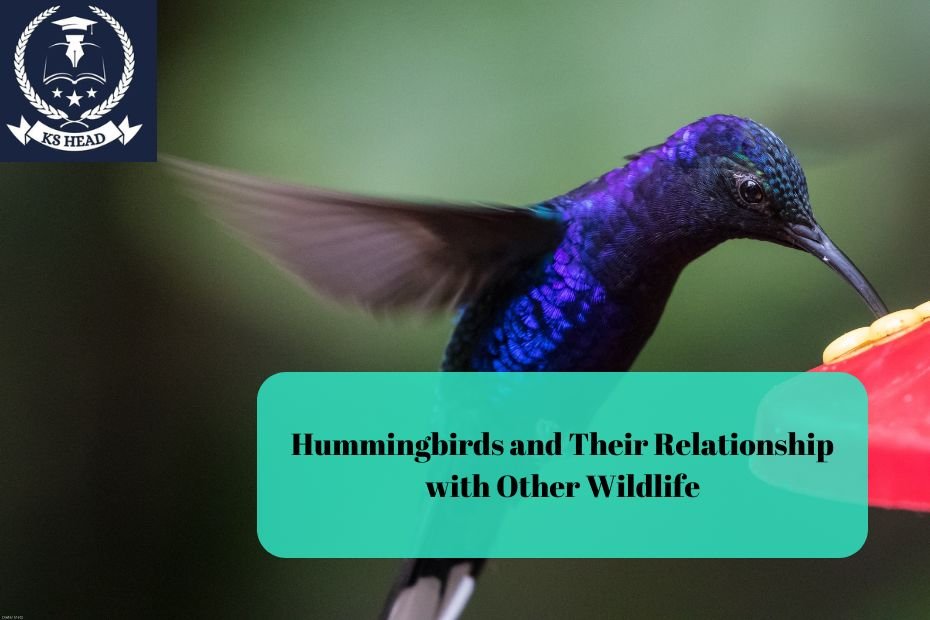Hummingbirds are remarkable creatures that play a crucial role in their ecosystems. Their interactions with various wildlife species, from plants to insects, create a delicate balance that sustains life in their habitats. This article explores the relationships between hummingbirds and other wildlife, highlighting their ecological significance and the benefits of fostering biodiversity in our gardens and landscapes.
The Role of Hummingbirds in Ecosystems
Hummingbirds are essential pollinators, primarily relying on the nectar of flowering plants for sustenance. This feeding behavior promotes plant reproduction, benefiting not only the plants but also the broader ecosystem. Hummingbirds have evolved alongside flowering plants, developing specialized adaptations that enhance their pollination efficiency.
Pollination Partnerships
- Mutualism: The relationship between hummingbirds and flowering plants is a classic example of mutualism, where both parties benefit. Hummingbirds obtain energy-rich nectar while helping plants reproduce by transferring pollen from one flower to another.
- Adaptations: Many plants have evolved features that attract hummingbirds, including tubular flower shapes, bright colors (especially red), and high nectar volumes. This evolutionary relationship ensures that hummingbirds have a reliable food source while enhancing the reproductive success of the plants.
The Importance of Nectar
Nectar is not just a food source for hummingbirds; it also has nutritional value. It provides the energy necessary for their high metabolism, enabling them to maintain their rapid wing beats and energetic flight. In addition to carbohydrates from nectar, hummingbirds also consume insects and spiders for protein, vitamins, and minerals.
Hummingbirds and Flowering Plants
Hummingbirds have a unique relationship with specific flowering plants. Certain plants are particularly favored by hummingbirds due to their morphology and nectar composition.
Preferred Plant Species
- Bee Balm (Monarda): This plant produces vibrant red and purple flowers that are rich in nectar. Hummingbirds are drawn to its tubular blooms, making it a popular choice for gardens.
- Trumpet Vine (Campsis radicans): Known for its bright orange flowers, trumpet vine is a favorite of hummingbirds. Its nectar-rich blooms provide an excellent food source during the summer months.
- Salvia: With various species and colors, salvia attracts hummingbirds while adding beauty to gardens. The nectar-rich flowers are easily accessible, making them an ideal feeding spot.
Impact on Biodiversity
By supporting hummingbird populations, we promote biodiversity within our ecosystems. Hummingbirds aid in the reproduction of numerous flowering plants, contributing to a diverse array of flora. This diversity, in turn, supports other wildlife, including insects, birds, and mammals that rely on these plants for food and habitat.
Hummingbirds and Insects
While hummingbirds primarily feed on nectar, they also rely on insects for essential nutrients. Their relationship with insects is intricate and multifaceted.
Insectivorous Diet
- Protein Source: Hummingbirds consume small insects, such as aphids, gnats, and spiders, to obtain protein. This diet is especially important during breeding seasons when they require additional nutrients for egg production and chick development.
- Foraging Behavior: Hummingbirds often hover near flowers, catching insects while feeding on nectar. Their rapid wing beats allow them to dart quickly between blooms, making it easier to catch small prey in mid-air.
Interactions with Other Insect Species
- Competition: Hummingbirds may compete with other nectar-feeding insects, such as bees and butterflies, for food resources. However, their ability to access nectar from deep within tubular flowers often gives them an advantage over other pollinators.
- Predation: Hummingbirds also play a role in controlling insect populations. By consuming pests like aphids, they help maintain a balance within ecosystems, preventing overpopulation and the spread of plant diseases.
Hummingbirds and Other Birds
Hummingbirds coexist with various bird species in their habitats, forming both competitive and cooperative relationships.
Competition for Resources
- Territorial Behavior: Male hummingbirds are known for their territorial nature, especially during the breeding season. They may defend feeding areas from other hummingbirds and even larger bird species, ensuring they have enough food to sustain their energy levels.
- Shared Habitat: While competition exists, many bird species can coexist in the same environment. Hummingbirds often prefer different feeding strategies and times, allowing them to share resources without direct conflict.
Cooperative Relationships
- Fostering Biodiversity: The presence of hummingbirds can enhance the overall biodiversity of an area. By attracting diverse plant species that thrive alongside hummingbirds, other bird species may benefit from increased food availability and nesting sites.
- Attracting Predators: Hummingbirds can also inadvertently attract larger birds of prey, such as hawks, which may use the same perches and hunting grounds. While this can be detrimental for hummingbirds, it plays a role in maintaining the ecological balance.
Hummingbirds and Mammals
Hummingbirds interact with various mammal species in their environments, ranging from beneficial relationships to potential threats.
Beneficial Interactions
- Pollination: Certain mammals, like bats, also act as pollinators. While they primarily operate at night, their activity can enhance the overall pollination dynamics within an ecosystem that includes hummingbirds. Both groups help maintain plant populations, providing a steady food supply for other wildlife.
- Habitat Creation: Mammals that feed on flowers or fruits can help disperse seeds, leading to the growth of new plants that benefit hummingbirds. This interdependence fosters a rich and diverse habitat.
Potential Threats
- Predation: Larger mammals, such as cats and raccoons, can pose threats to hummingbirds. These predators may hunt hummingbirds or their nests, reducing their populations. Protecting nesting sites and creating safe environments can help mitigate these risks.
- Habitat Loss: Urbanization and habitat destruction can limit the availability of food sources and nesting sites for hummingbirds and other wildlife. Conserving natural habitats is crucial for supporting hummingbird populations and their interactions with other species.
Creating a Hummingbird-Friendly Habitat
To support hummingbirds and their relationships with other wildlife, it’s essential to create a conducive environment. Here are some tips for fostering a hummingbird-friendly habitat:
1. Plant Native Flowers
Choose native plants that attract hummingbirds and provide nectar. Native plants are well-adapted to local conditions and support a diverse range of wildlife.
2. Install Hummingbird Feeders
Provide nectar feeders filled with homemade nectar to attract hummingbirds. Place feeders in visible locations and keep them clean to ensure a steady food supply.
3. Reduce Pesticide Use
Avoid using harmful pesticides in your garden, as they can harm hummingbirds and other beneficial insects. Opt for organic gardening practices to create a safe environment.
4. Create Water Sources
Adding birdbaths or shallow dishes of water can provide drinking and bathing spots for hummingbirds and other wildlife. Ensure the water is clean and shallow enough for easy access.
5. Support Biodiversity
Encourage biodiversity in your garden by planting a variety of flowers, shrubs, and trees. A diverse habitat supports various wildlife species, including hummingbirds, insects, and other birds.
Conclusion
Hummingbirds are vital components of their ecosystems, forming intricate relationships with flowering plants, insects, other birds, and mammals. By understanding these connections, we can appreciate the ecological significance of hummingbirds and the importance of fostering biodiversity in our gardens and landscapes. Creating a hummingbird-friendly habitat not only benefits these beautiful birds but also supports a wide range of wildlife, contributing to the health and balance of our ecosystems.
FAQs
1. What types of plants attract hummingbirds the most?
Native flowering plants with tubular shapes and bright colors, such as bee balm and trumpet vine, are particularly attractive to hummingbirds.
2. How can I create a safe environment for hummingbirds?
To create a safe environment, avoid pesticides, provide clean water sources, and protect nesting areas from predators.
3. Do hummingbirds migrate?
Yes, many hummingbird species migrate seasonally, often traveling long distances between breeding and wintering grounds.
4. What should I include in a hummingbird feeder?
Use a mixture of one part sugar to four parts water, boiled and cooled before filling the feeder. Avoid red dye or additives.
5. How can I support biodiversity in my garden?
Plant a variety of native flowers, shrubs, and trees, provide food and water sources, and minimize pesticide use to create a diverse habitat.

